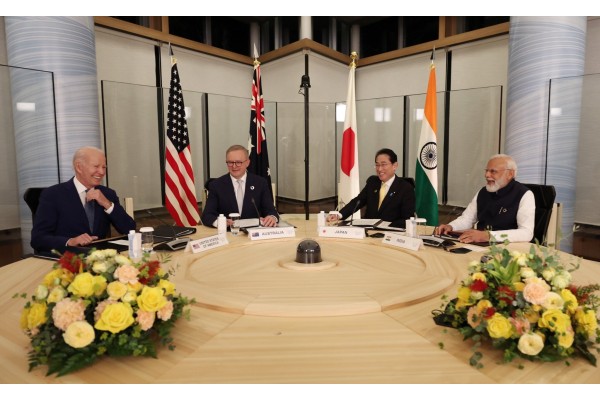NEW DELHI: The joint statement issued at the end of the meeting of Quad heads of state in Hiroshima, Japan, over the weekend, suggests the grouping is coming into its own. From infrastructure to setting and sharing technology standards, from cyber security to health security, the list of Quad-driven initiatives is expanding, indicating that working groups at various levels have plans and timelines well in hand.
“The Quad is developing into a brand with a credible narrative and universe of its own,” says Pankaj Saran, former deputy national security adviser, “and the best part is these are not classical military initiatives, so nobody can point a finger or object.”
But the strategic orientation of the Quad towards the Indo-Pacific sends the clear message that countering China is the imperative. The focus on infrastructure initiatives sends another message, that the Quad is determined to help build capacity among Indo-Pacific states that could help them reduce their dependence on China.
This suits India and there is a view that post-Galwan, Delhi may have cast aside whatever lingering reservations it may have had about groupings like the Quad. It helped that the joint statement did not name or condemn Russia for invading Ukraine, merely saying: “We strongly oppose destabilising or unilateral actions that seek to change the status quo by force or coercion … we express our deep concern over the war raging in Ukraine and mourn its terrible and tragic humanitarian consequences.”
This was language India could live with. Also, India has been slowly calibrating its position on Ukraine. Prime Minister Modi spoke to President Zelensky on the phone last year, earlier this year Ukraine’s deputy foreign minister was in Delhi, culminating in Modi and Zelensky meeting in Hiroshima.
The joint statement also lauded India’s leadership role in the Indian Ocean, a hint of larger things to come.
“We welcome the work of the Indian Ocean Rim Association as the Indian Ocean region’s premier forum for addressing the region’s challenges. We recognise India’s leadership role in finalising the IORA outlook on the Indo-Pacific …”
Next year, India will host a full-fledged Quad heads of state summit, an opportunity to address its concerns and seek consensus on solutions with its partner members.
Now for a quick look at the Quad initiatives and their implications. Improving the Indo-Pacific’s digital connectivity through access to “critical and emerging technologies and advanced telecom technology including 5G networks,” offers an alternative to Huawei and ZTE that are believed to operate at the behest of the Chinese Communist Party.
The Quad initiative on Technology Standards in Critical and Emerging areas like semiconductors and quantum is another move which will be driven by industry. A Clean Energy Supply Chains Initiative is designed to accelerate the transition of the Indo-Pacific states away from fossil fuels and enhance regional energy security.
After the Covid experience and China’s studied attempts to cover up its role (not to mention reports about the poor performance of its vaccine), the Quad is taking the Vaccine Partnership forward to a Health Security Partnership to build the region’s capacity to identify and respond to potential pandemics in the future.
The joint statement also makes clear that the Quad will work with regional bodies and associations like ASEAN. “We are committed to ensuring the Quad’s work is aligned with ASEAN’s principles and priorities and continue to support the ASEAN Outlook on the Indo Pacific. We continue to underscore ASEAN’s regional leadership role ..”
The U.S. hand was obvious in these words in the joint statement. “We seek a region where no country dominates and no country is dominated, one where all countries are free from coercion and can exercise their agencies to determine their futures.”
Clearly, China’s muscle flexing in the Indo-Pacific is not acceptable and will be challenged. And just to underscore that point, the statement says: “Our four countries are united by this shared vision.”
















